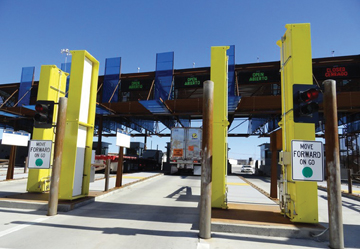While high-end retailers or specialty stores may provide samples of lesser known fruits and vegetables to shoppers, Franzone wishes all retailers would do the same. Not only are these often-exotic commodities interesting additions to meals, but delicious too. “Maybe it’s time the retailers introduce new fruits and vegetables to people; it expands their horizons and it’s good for them.”
Staples and Hispanic Vegetables
As grower-shippers and suppliers transitioned to the Winter Deal in Nogales, many of what are generally referred to as the staples—such as cucumbers, squash, and honeydew melons—were available. These items filled warehouses as receivers waited for the next round of product, finishing the year with tomatoes, including the ever-popular Roma and other varieties.
At Ciruli Bros., these commodities and more were filling the warehouse in the last quarter. “We’re also seeing a growing trend in Hispanic items,” Ciruli added. “In fact, many of these have transitioned from strictly Hispanic items to mainstream items, including tomatillos, serranos, jalapenos, and, of course, avocados.”
Helping maintain demand is the increased use of protected agriculture. “Mexico has strong greenhouse, shade house, and other protected agriculture,” says Moore. “This allows growers to manage Mother Nature and growing seasons better. In Canada, you have to turn on the heat to grow in a greenhouse; in Mexico, you just have to keep pests, wind, and rain out, so it’s more efficient.”
According to the U.S. Department of Agriculture (USDA), Mexico accounts for nearly three-quarters of the U.S. import market for greenhouse tomatoes, with Canada’s share taking up the rest. This may change in the ensuing years, however, as more U.S. growers are turning to greenhouses for steady supply unaffected by the weather and water shortages. Though the initial costs can be significant, more greenhouses are popping up across the nation, including urban greenhouses on rooftops, which often supply local farmers’ markets, retailers, and restaurants.
While the purpose of greenhouses is largely to manage weather, control pests, and grow consistent, high-quality crops, shadehouses are a much less expensive option and help can control these factors as well. A number of growers were transitioning some crops into shadehouses; even so, the bulk of Mexico’s harvest remains field-grown fruits and vegetables.
This is true for MAS Melons & Grapes, LLC, which continues to grow most of its produce in the field. “Right now, 99 percent of our crops are grown in open field,” says Suarez. “That includes honeydew, watermelon, table grapes, and cantaloupe. Our cantaloupe goes to the Japanese and Mexican markets, and our grapes go all over the world—New Zealand, Eastern Asia, England, and Central America. We’ve also jumped into avocado and broccoli to meet demand in Japan—which has worked very well for us.”



